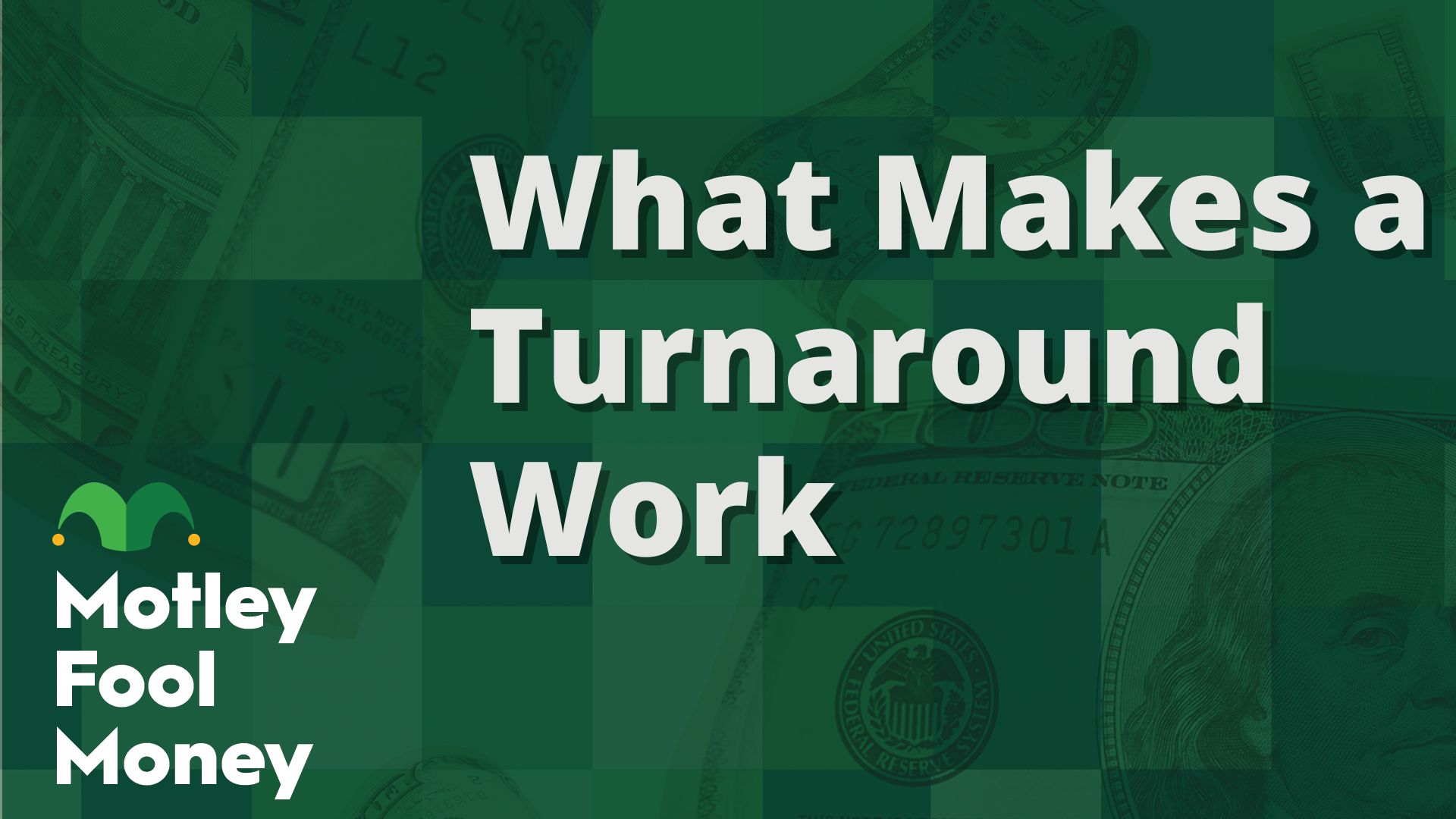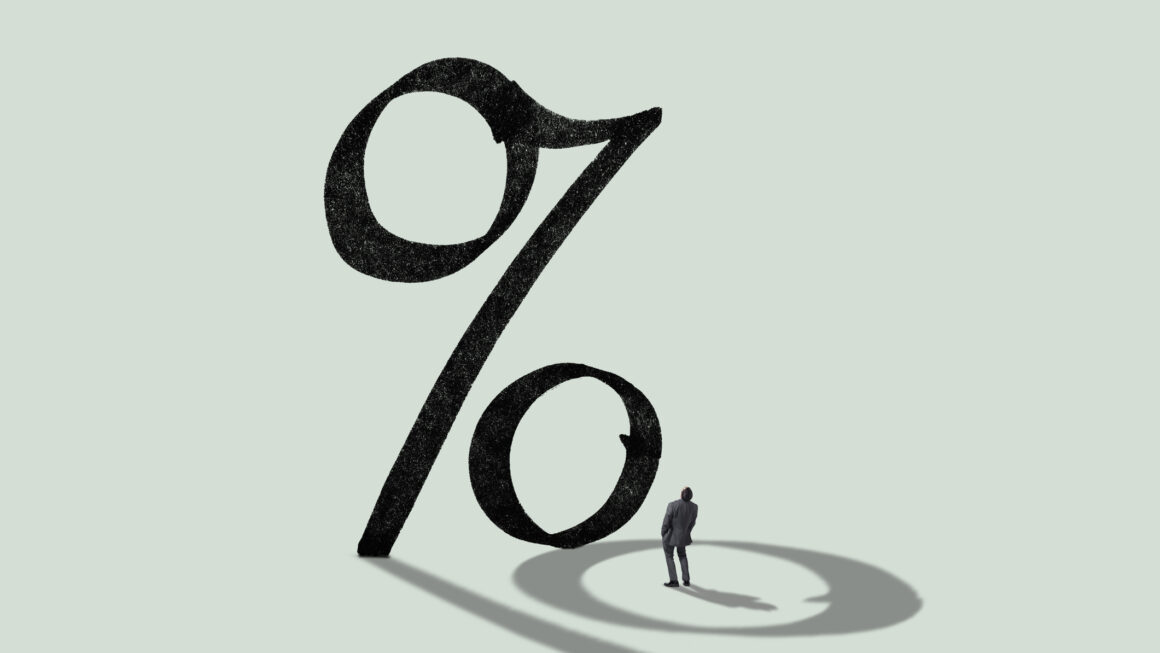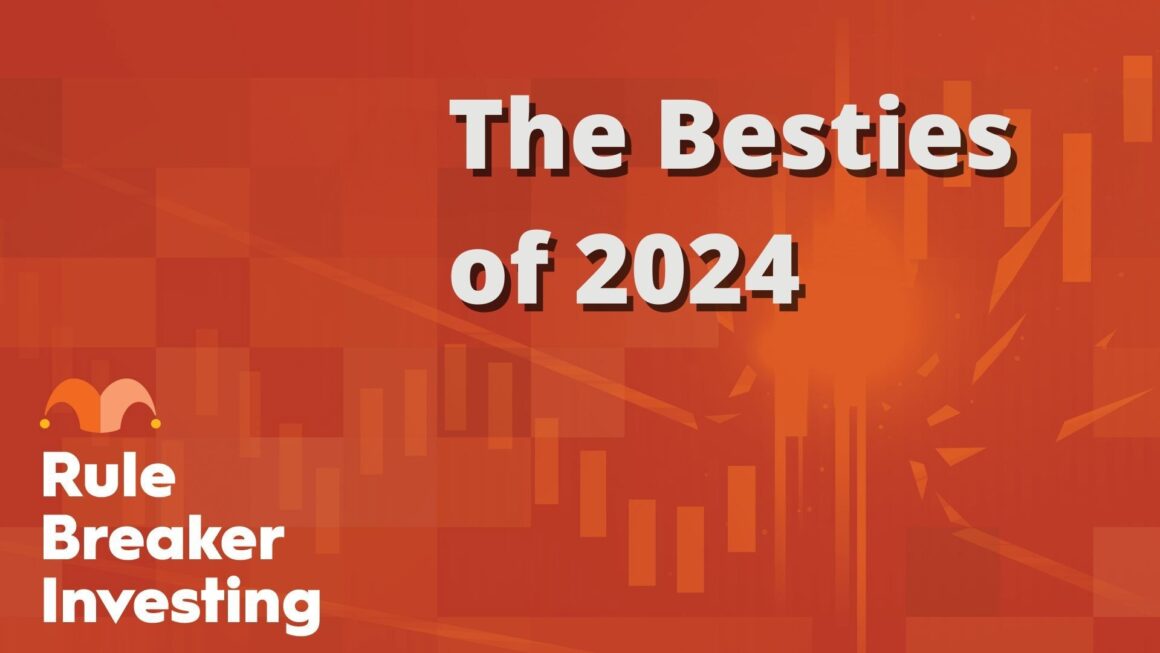We also talk about “The Great Wealth Transfer” from baby boomers.
In this podcast, Motley Fool analyst Jim Gillies and host Ricky Mulvey discuss:
- Nike‘s strategic pivot, and what it means for its retail partners.
- Why turnaround stories are difficult to implement.
- Foot Locker‘s impressive leadership.
Then, Motley Fool host Alison Southwick and personal finance expert Robert Brokamp discuss “The Great Wealth Transfer,” and how to factor a potential inheritance in a financial plan.
To catch full episodes of all The Motley Fool’s free podcasts, check out our podcast center. To get started investing, check out our beginner’s guide to investing in stocks. A full transcript follows the video.
This video was recorded on Sept. 24, 2024.
Ricky Mulvey: A retailer wants to turn, and there’s only one person to call. You’re listening to Motley Fool Money. I’m Ricky Mulvey. Joined today by the person we are calling now for the third time to talk about this turnaround. The first time you’re hearing it. It’s Jim Gillies. Jim, thanks for being here.
Jim Gillies: Thanks for the invite, Ricky.
Ricky Mulvey: We’re doing pleasantries for the third time. A couple of false starts with today’s recording. Let’s get into it, because we talked about Nike’s trouble on Friday’s show, Asit, Ron, and Dylan covered it. You like the little companies. You like a retailer that makes some money that not a lot of people are talking about. That’s Foot Locker, which is an interesting position.
There’s a good story in CNBC about it from Gabrielle Fonrouge. But basically, Nike had this idea a few years back under its then CEO John Donahoe, which was that, You know what? We have distribution partners like DSW and Foot Locker. Sure, they sell a lot of shoes for us, but we’re going to be a tech company. We’re going to start selling shoes directly to the consumer. We’re going to do it through apps. That hasn’t really worked. Now what we might be seeing, Jim is maybe the new CEO Elliott Hill is going outside of the Foot Locker with the Boombox playing the Bleacher song, “I want to Get Better”. Maybe this relationship is starting to repair, and could mean something for Foot Locker. Do you think we’re going to see that new appreciation under Nike’s new leadership for those distribution partners that they’ve set aside for a few years?
Jim Gillies: I think so, yes. I’m going to lead out full disclosure when the news that John Donahoe. Look, you bring a guy over from PayPal. This is what happened, he was, “Oh, we’re going to turn into a tech company,” because he came from a tech company. But in the wake of when they said they were going to be reducing reliance on distribution venues like Foot Locker, the stock fell about 30 percent in the day. That would be Foot Locker’s stock, not Nike’s. Into that particularly strange breach, Hidden Gems Canada stepped. Since then, Foot Locker is down about 7 percent, because we could talk about the turnaround efforts going on under CEO Mary Dillon, which I have to praise as one of the great hires CEO transitions. You can keep your Starbucks, Brian Niccol. I’m going to take Mary Dillon with Foot Locker. But Foot Locker is down about 7 percent. Nike’s down about 34 percent, so it didn’t quite go the way John Donahoe was hoping. But I call this a bit of a breakfast problem. By the breakfast problem, I mean you go have your fairly standard American breakfast, eggs and bacon. The chicken is involved, the pig is committed.
The thing is, what you did, Nike, what they did to Foot Locker by basically saying, we are going to try to disintermediate things like Foot Locker and moving to the apps and selling direct. What you did was light a fire under Foot Locker to diversify their business. They had perhaps somewhat unintelligently, perhaps, but moved to, was about 75 perfect of their sales were Nike related, Nike brands, at that time. i think they’re down to about 55 or 60 percent, which is still high, But along with some acquisitions of a couple of companies called WSS and Atmos as well, that Foot Locker affected a couple of years back, and a move to going out of the malls.
Foot Locker is essentially relying on brands other than Nike. They’ve been encouraged to rely on brands other than Nike. They’ve been encouraged to go beyond the malls, so you can go to Les Hall District in Paris, and there’s a Foot Locker store, with all the other areas in the shopping districts. They have essentially said, “Okay, fine, we are going to prepare for a life with less Nike.” I think after two years, and about a year and a half of that boom, a year and a quarter of that’s been with Mary Dillon at the helm. I think that pivot that Foot Locker has been doing is actually starting to bear fruit. It’s not over yet, but they’ve got what they call their Lace Up program that she’s driving the strategy to the next 50 years of Foot Locker. But they’ve been planning for life with less Nike. Now here perhaps, comes Nike going, “About that. Maybe we want to be. ” That’s only a good thing for Foot Locker in my book.
Ricky Mulvey: You mentioned Brian Niccol going to Starbucks, you said Mary Dillon was a better hire. Mary Dillon had come in from Ulta Beauty in 2022 into Foot Locker. Immediately, what she does cuts guidance, spends the dividend, and also touts an improving relationship with Nike, because at the end of 2010, 75 percent of Foot Locker products were Nike. While they do want to break up a little bit, there’s a lot of cheddar cheese there. Why is this such a great higher for Foot Locker?
Jim Gillies: Well, the end of 2021, 75 percent of their product was Nike. Wasn’t even 2010. I think it’s a good hire. I didn’t mind that she cut guide. When the CEO comes in, that is the time to take the tough choices because you still got that halo effect of you’ve just arrived. She came from Ulta Beauty, where she had a market beating track record, and she was looking for her next achievement, and she comes to Foot Locker. It was interesting to me that she was willing to come because she could have stayed at Ulta, made millions of dollars a year and been fine. She didn’t have to do this. Just like Brian Niccol didn’t, Brian Niccol could have happily stayed at Chipotle, wanted a new challenge. I do like the new challenge.
But I’m going to suggest that the tougher slog is going to be, and probably already has been, Foot Locker because of the perceptions of, “Hey, it’s easier to buy coffee, and we go there repeatedly,” whereas shoes, there’s a lot of places. You could argue shoes are a commoditized product. You don’t have to buy your Nikes at Foot Locker. You can go to Dick’s Sporting Goods, you can go to Academy Sports + Outdoor. You can buy online on the apps, if you want. She saw a retailer that a lot of people had written off, frankly. I know there was some bankruptcy talk earlier this year. If you’re at all familiar with the financials of Foot Locker, is never that bad, frankly, it’s a little silly that that was some talk, but that’s fine. She’s come in with a new strategic plan. That, frankly, I think, like I said, I believe it is working. Yes, you cut your dividend early, but actually, the first thing they did was they suspended share repurchases, because prepandemic, what people don’t necessarily realize is Foot Locker was a cash machine. I think I’m going to get my numbers precisely wrong, but going to get it roughly right, I hope. In the decade prior to the Nike announcement that they were going to deemphasize places like Foot Locker.
The decade before 2022, Foot Locker, which currently has a $2.6 billion market cap. They generated $5.3 billion in free cash flow over a decade. Which is a stupendous amount of money. About 60 percent of that went to buybacks, about 20 percent went to dividends, which, as you mentioned, they cut. Then the rest went to acquisitions and other little minority investments. I think she came in and she said, “Look, this has been a cash engine, but in order to get to that next stage of growth and go to the next 50 years, we’re going to have to take some short term pain.” She came in. She came in with a vision. She came in with the strategic capital to enact that vision. Again, buybacks, gone. Dividend, cut. We’re going to invest in our concepts. We’re going to like I said, they made some strategic acquisitions. They very much have focused on reinvesting in their business, and there were a couple of cash flow negative years, frankly. I think we’ve come through that now.
The company is now free cash flow positive. The company is now growing comp sales, again, which is good. The company is very definitely looking at, they’re looking at their store fleet and they’re moving their headquarters from New York to St. Petersburg. Real estate is going to be a little cheaper. They are largely gassing a lot of their European stores, either closing them or they’re going to be giving them to a development partner. They’re offloading a lot of that risk, which I think are all good moves. They have focused on brands beyond Nike. Like I said, now Nike’s coming back, cuddling up a little going, “Hey, remember us,” and again this is good for a Foot Locker that has been preparing for a less Nike. Now they’ve got a motivated partner coming back in going, Perhaps we were too hasty. Especially with Elliott Hill going into the top job at Nike. He was, I think there for 30 odd years. I think I’ll passed over for the top job, which is why he retired. I’m not fully up on that, even though I am a long time Nike shareholder, should probably be a bit more aware. He retired. The fact that he’s now coming back and Donahoe is out after a largely unsuccessful tenure, I think is interesting. I think he’s probably going to want to go back to what worked for Nike in the past.
Ricky Mulvey: Given what you just said about moving the headquarters to St. Petersburg and then their store count in Europe, I do want to mention we are discussing St. Petersburg, Florida is where Foot Locker is moving.
Jim Gillies: Yes. They are not relocating to Russia. That is true.
Ricky Mulvey: Let’s talk about the Lace Up turnaround because I seem sometimes a little jaded when I see a turnaround plan. Usually there’s North Stars involved. There’s reinvigorations. The one going on at Foot Locker, it’s the other brands that you mentioned. That’s On, Hoka, Birkenstock, Ugg. When they’re reinventing their stores, they’re taking them out of malls, right now, 40 percent of the Foot Locker store fleet, it’s outside of malls. They’re hoping to move that to 50 percent. They’re introducing new concepts like “House of Play”, where they are essentially moving from, if you think of shoes on the wall, and then a center area for someone to try on shoes, trying to blow that up a little bit with almost museum type displays of different basketball shoes and featuring different products. What makes you more optimistic about the Lace Up turnaround plan versus other less successful retail turnaround North Star-type plans?
Jim Gillies: Yes, I’m reminded that Ron Johnson left the highly successful Apple stores to go try to reinvigorate JC Penney, and we all know how well that worked out. I think the Lace Up plan, the list of turnaround plans that have failed, as you have intimated, it’s not a short list. But you have to work within the combines of what you have available to you. I like the fact that they are emphasizing extra brands that they are doubling down what they call sneaker culture. Now, I am not someone that is terribly hip to any jive, frankly. I know what works for me, and I stick there. But I am aware that some people are very happy to pay big bucks for the latest celebrity endorsed shoe pick your style, Yeezys and various other Nike products that sneakerheads and sneaker head culture is a thing. Nike is leaning in. They also, I believe, still own a large chunk of the sneakerhead trading in Portland, it was called Goat or something. Again, I should remember this. I like the fact that part of their like, you talked about leaving the mall, essentially. Good. People have been leaving the malls for the better part of the last couple of decades, whether that’s to the big box stores or whether it’s to more of a comprehensive shopping district. That’s what they should be doing.
They should have been doing it before that, frankly. But they’re now fully on board with expanding, as you said, 2026 target, 50 percent off mall square footage hope at North America only, but again, non North American stuff is supposed to be a lot less relevant, frankly, except in Japan. They are trying new concepts, some of which are absolutely going to fail. They’re really emphasizing as part of the Lace Up program, they’re emphasizing their loyalty program. Of course, everyone now, loyalty program is almost table stakes at this point. Every brand needs one of these, and some of these can be very, very successful, see the aforementioned Starbucks. Some can be less successful and probably fill a couple here. But it’s funny, they’re emphasizing what Nike was trying to do with the omnichannel offering and be able to buy via the Apps. I think Mary Dillon has taken what worked at Ulta Beauty and has said, “Okay, let’s bring some of those concepts here.” She’s not exactly an undiscovered CEO, like I think a lot of people have a very high opinion of her following her stint at Ulta Beauty. I think a lot of people have forgotten a little bit that she’s now in charge of Foot Locker. I think you want to give the woman time to cook. I think, like I said, I think especially the last couple of quarters, it looks like it’s bearing fruit with the results of they’re posting.
Ricky Mulvey: Well, it’s a company that I personally don’t own, but one, I’m going to move to my watch list after this conversation. Jim Gillies, appreciate you being here, and thanks for your time and your insight.
Jim Gillies: Thank you.
Ricky Mulvey: Up next, the great wealth transfer has begun. Alison Southwick and Robert Brokamp discussed the trillions of dollars that baby boomers are passing down and the estate planning conversations to have no matter what side you’re on.
Alison Southwick: Here’s some fun facts about baby boomers. Fun fact. There’s 73 million of them out there. Another fun fact. Boomers are currently between the ages of 60 and 80. Last fun fact. Life expectancy at birth in the US, is currently about 77.5-years-old. If you make it to 60, you have another 20 or so years ahead of you, which leads me to a not very fun fact. Millions of boomers are going to be faced with the realities of their mortality in the coming years. As a result, according to Cerulli Associates, $84 trillion is projected to be passed down from older Americans to millennial and GenX heirs in the next 20 years. This is the greatest transfer of wealth ever in history, and it has been cleverly dubbed “The Great Wealth Transfer”.
Robert Brokamp: Now, and it’s not just the boomers. Sixteen million members of the so called silent generation are still alive. These are folks between the ages of 80 and 96-years-old, but it’s definitely the boomers who are the generation with the most doghs, since they own about half of America’s wealth. If you look at the money currently held by boomers and the silent generation that could possibly change hands over the next decade or a few. Here’s how it breaks down according to the New York Times. Twenty six percent is in stocks, 25 percent in real estate, 19 percent in pensions and annuities. I think that includes both 401ks and the traditional pension, nine percent in private businesses, five percent in durable goods, and 17 percent in other assets. A very diversified portfolio of assets that could be passed on to heirs.
Alison Southwick: Now, $84 trillion is a massive amount of money. But before you go spending a windfall, you think awaits you, you should know that the vast majority of boomers will leave little to nothing to their heirs. According to a Northwestern Mutual study, 38 percent of Gen Zers, 32 percent of millennials, and 28 percent of Gen Xers expect to inherit money or assets, but only 22 percent of boomers said they expect to leave an inheritance. When you look at how wealth is currently distributed across households as the Federal Reserve did, you’ll see that most of the $84 trillion will stay in the top 10 percent of the wealthiest families who currently control about 67 percent of the wealth pie in this country.
Robert Brokamp: Yeah, wealth is indeed very concentrated in America. The top one percent own as much as the bottom 90 percent. The bottom 50 percent have only about eight percent of the country’s wealth. That could potentially explain why only 22 percent of boomers expect to leave an inheritance. But I think it’s likely inaccurate to believe that that other 78 percent of boomers won’t leave anything to their heirs. Because the truth is every boomer and really everybody, owns plenty of stuff. They have cars, bank accounts, furniture, heirlooms, and so on, more than half own retirement accounts, and around 3/4 of those 65 and older own a home, and when they die, someone will get all that stuff.
Alison Southwick: Even though the Great Wealth Transfer is expected to be concentrated among the wealthiest households in this country, it’ll still impact millions of people, including you, dear listener, if you have parents or other older relatives that may be factoring you into their estate plans. If you do end up receiving a windfall in the coming years, it can be a really great problem to have and one you’ll want to make the most of. Of course, buy the jet ski, but after that, you’ll want to be a bit more responsible. Here are a few steps to consider when factoring in a potential inheritance in your financial plan. The first is, encourage everyone to have a rock solid estate plan.
Robert Brokamp: Yeah, surprisingly, less than half of American adults have a will. The percentage is higher for those who are older or who have more money. But even for those who say they have a will, it often hasn’t been updated for years, or frankly, it might be hidden someplace where no one can find it when it’s needed. On top of all that, a will is just one component of an estate plan. It also involves filling out beneficiary designation forms on retirement accounts and life insurance. Properly titling other accounts and maybe having a trust. To ensure the quickest and least costly transfer of wealth and one that will reduce the odds that your heirs are going to fight over your inheritance, do all that you can to encourage all your relatives to have an updated estate plan. Depending on your family, this can be a really easy conversation because of course, everyone should have an estate plan. But in some families, money is private, might be a contentious topic. You may not get very far, but I encourage you to try.
One way that we’ve talked about on the show before to open the conversation is just to say what you’ve done. You just perhaps say something like, “Hey, just updated my estate plan, and if something ever happens to me or to me and my spouse” if you’re married, “Here’s where to go or who to contact.” Hopefully that will get your relatives talking about what they have or maybe haven’t done. One of the reasons people give for not doing estate planning is the cost, which I can understand. It can cost hundreds to thousands of dollars. You can counter that by saying that if they don’t have an estate plan, the state or the county is going to determine who gets their stuff. It’ll be tied up in probate court, and it may cost the estate in legal fees. Why not pay them now and make sure everything goes to who you want? If money is still an issue after that, you might want to offer to cover the cost for your parents or other relatives because you’re going to be the person who pays the price if they don’t have an estate plan.
Alison Southwick: After you’ve talked to everyone about having a rock solid estate plan, you’ll also want to talk as tactfully as possible with your potential benefactors.
Robert Brokamp: Yeah. You just tried to encourage your parents or whatever, other relatives to get an estate plan. Now it’s time to see if they’ll tell you what’s in the estate plan. In other words, who is getting what? Again, very touchy conversation, but it can be important for your own financial plan to know what you might inherit one day. According to the Northwestern survey cited earlier, half of Americans expecting an inheritance consider it critical or highly critical to their financial security. If you’re in this group that is really counting on an inheritance, then it’d be helpful to know what to expect. You can just start the conversation with honesty. Maybe something like, “Hey, mom and dad, I’ve been trying to figure out whether I’ll have enough to retire. It would be really helpful for me to know whether you think it’s reasonable for me to factor in a potential inheritance into my plans.” One other thing I’ll add, is that if you know you’ll be the executor of the estate, then that gives you even more reason to ask questions about the plans. I say this from personal experience. I was executor for an older relative who passed away in 2020 from COVID, and I wished I had a detailed conversation about his estate plan while he was alive because it was a mess, and it took me a long time to get everything straight.
Alison Southwick: You’re a pro.
Robert Brokamp: I know.
Alison Southwick: It took you a long time?
Robert Brokamp: Honestly, still not resolved. Four years later, still not resolved.
Alison Southwick: We’ll have to do a podcast episode about that one day tactfully. After you’ve had some conversations, you’ll want to be conservative with your assumptions about future inheritances.
Robert Brokamp: If you’re able to have an honest conversation with your parents or whatever other relatives, that should give you an idea of what you might expect. But a lot can happen between now and when they pass away. Their net worths are going to go up and down, and frankly, they might even change their mind about who gets what. But most importantly, a good bit of their money may end up being consumed by end of life expenses.
Roughly 70 percent of people over the age of 65 will need some form of long term care. It can cost between $50,000 and $150,000 a year depending on what someone needs, where they live, and whether families close enough to provide the care. Personally, I have had these conversations with my parents, they’re divorced, they’re both in their mid 80s, I assume that I’m going to get 1/3 of what I’d get if they passed away today. That’s not a hard and fast financial planing rule. It’s just a reasonable assumption based on what I know about their portfolios, home values, annual spending, and their estate plans, and assuming that they’re going to need some long term care at some point. But you should come up with your own set assumptions for what’s reasonable for your situation. If you don’t know that much about your parents or other relatives finances, then you should really play it safe with your assumptions because even your educated guesses about their net worths and their estate plans could be way off.
Alison Southwick: You’ll also want to take some time to understand some of the rules around inheritances. It sounds like a fun one.
Robert Brokamp: It is not a fun one, and I’m only going to give some of the details here, but at this point, we’re assuming that you have inherited something. Earlier, we mentioned that all types of property could pass on to you from older Americans. Stocks, real estate, businesses, and so on. Each of those have their own rules and quirks when it comes to estate planning. You might want to hire a financial planner or account, maybe a lawyer to help sort things out. But I’m just going to highlight a couple of things to keep in mind. First of all, the laws governing the inheritance of retirement accounts like IRAs or 401ks have become much more complicated over the past five years, thanks to the passage of the Secure Act in 2019 and Secure 2.0 in 2022.
At some point, if you inherit one of these accounts, you’ll be required to take money out, and it could be the year after you inherit the account, or it could be not until you’re 73 or 75. You may have to drain the entire account within five years or 10 years or never. It all depends on when the person died, his or her age, your relation to that person, your age, as well as other factors. It is super complicated. Definitely make sure you understand the most updated guidance from the IRS. Then the other thing I’m going to highlight, is that if you inherit something outside of a retirement account, the cost basis will get stepped up to the value of the investment on the date of the death of the person who left it to you. Let’s say your mom bought a stock many, many years ago, five dollars a share. On the day she died, it was worth $100 a share. That’s now your cost basis. Neither you nor your mom’s estate has to pay taxes on that $95 worth of capital gains. If you sold it immediately, you’d owe no taxes. Now I’m not saying you should, but if you inherit an investment that doesn’t really fit with your overall portfolio, then the sooner you sell it, the lower the tax consequences.
Alison Southwick: After you’ve passed through some of the hurdles, you’ve understood the rules, you’ve inherited something. Bro says, you can enjoy 5-10 percent of it, but invest the rest.
Robert Brokamp: This is an old financial planning rule thumb for any so called found money. It could be inheritance, lottery, unexpectedly large bonus, anything like that. The point is, of course, not to go crazy. Enjoy it a little bit, maybe by the jet ski, but be planful with the rest. But it does depend on your overall financial picture. If you’re behind in your retirement savings as we discussed last week, or maybe behind in some other goal like saving for your kids college expenses, then really the best move would be to not spend any of it and invest it instead.
Alison Southwick: Finally, you’ll want to update your estate plan to account for any changes.
Robert Brokamp: Any change in your family tree and/or your finances can warrant a review of your estate plan, and both could be the case after a relative passes away and you get a significant inheritance. Look at your documents. Add new beneficiary designations to any retirement accounts you inherit. Maybe make sure any new assets you got have been added to your trust if that’s appropriate for your situation and determine whether your will or other documents need to be updated to account for any new property you’ve acquired.
Alison Southwick: Well, not sure how to get or update an estate plan. We’ll tune in next week when we’re going to talk about how to be a smart bequeather with your bequeathing. We’ll figure out the grammar there by next week. Don’t worry.
Ricky Mulvey: We always enjoy hearing where and how you listen to the show in a review or our email, which is [email protected]. Bird Dog Trainer, a subscriber to Stock Advisor US in Hidden Gems Canada. Let us know that they listen while they’re training bird dogs or cleaning out the kennels. Sometimes they listen while checking on cattle or working on equipment, and they can’t remember missing a show in a very long time. We’re delighted to be a part of your routine wherever you listen. As always, people on the program may have interests in the stocks they talk about. The Motley Fool may have formal recommendations for or against. Don’t buy or sell anything, based solely on what you hear. I’m Ricky Mulvey. Thanks for listening. We’ll be back tomorrow.













